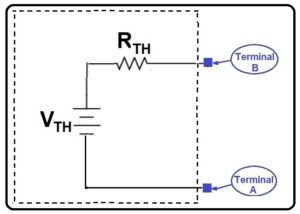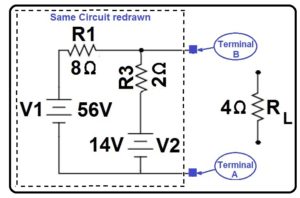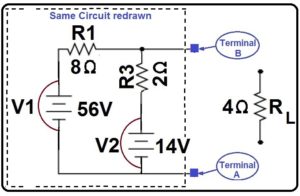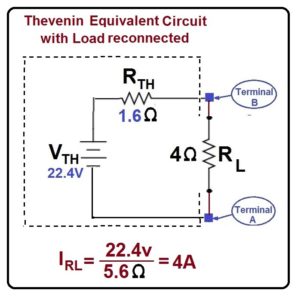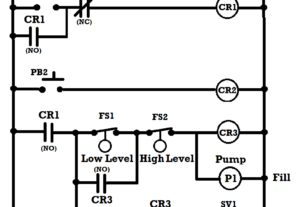Thevenin’s Theorem
Thevenin’s Theorem shows how any combination of batteries and resistances with two terminals can be replaced by a single voltage source VTH and a single series resistor RTH.
Steps to apply Thevenin’s Theorem:
1. Disconnect the load resistor.
2. Calculate the Open Circuit Voltage using Kirchhoff’s Law, Ohm’s Law, etc. The result is the Thevenin Voltage.
3. Open all Current Sources and Short all Voltage Sources.
4. Calculate the Open Circuit Resistance. The result is the Thevenin Resistance.
5. Redraw the circuit with the Thevenin volt(VTH) in series with the Thevenin resistance (RTH) reconnect the load resistor which was removed in Step (1).
6. Now find the Total current flowing through Load resistor by using the Ohm’s Law.
Next, we will take a look at Norton’s Theorem another circuit analysis method to calculate the load Current and Voltage.
Norton’s Theorem states any linear circuit that, no matter how complex, can be represented by an equivalent circuit with just a single current source and Parallel Resistance connected to a load.
A current source is a component that supplies a constant amount of current, by providing the appropriate voltage necessary to maintain a constant current.
Steps to Nortonize a circuit:
Replace the load resistor with a short between the load terminals.
Calculate the current through the short circuit. (This is INorton).
Remove the short circuit between the Load Terminals.
Short the voltage sources and calculate the resistance between the Load Terminals. (This is RNorton)
Draw the Norton Equivalent Circuit and reconnect the Load Resistor.
Calculate the load resistor Current and Voltage.



